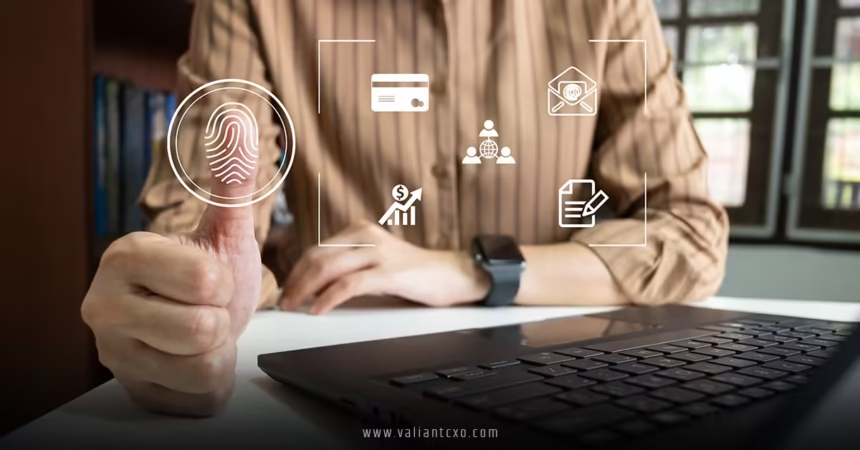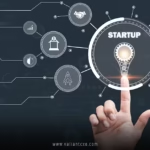Digital Identity Verification in American Banks is no longer just a tech buzzword—it’s the backbone of modern banking security. Imagine walking into a bank, but instead of handing over your driver’s license, you snap a selfie, upload a document, and voilà—you’re verified in seconds. That’s the power of digital identity verification, and American banks are leaning into it hard. Why? Because in a world where fraudsters are getting sneakier, and customers demand seamless experiences, this technology is a game-changer. In this article, we’ll dive deep into what Digital Identity Verification in American Banks means, how it works, its benefits, challenges, and where it’s headed—all while keeping things clear, engaging, and beginner-friendly.
What Is Digital Identity Verification in American Banks?
So, what exactly is Digital Identity Verification in American Banks? Picture it as a digital bouncer at the door of your bank account. It’s the process of confirming that you are who you say you are when you’re banking online—whether you’re opening an account, transferring money, or recovering a forgotten password. Unlike old-school methods where you’d show up at a branch with a stack of papers, digital identity verification uses technology like biometrics, AI, and document scanning to verify your identity remotely.
This isn’t just about checking a box. Banks use Digital Identity Verification in American Banks to protect you from identity theft, comply with regulations like Know Your Customer (KYC) and Anti-Money Laundering (AML), and make your banking experience smoother. Think of it like a high-tech handshake between you and your bank, ensuring trust without the hassle.
Why Is It So Important?
Why should you care about Digital Identity Verification in American Banks? Well, fraud is a massive problem. In 2024 alone, Americans lost over $12.5 billion to fraud, with identity theft making up a chunk of that. Hackers are out there, trying to impersonate you to drain your accounts or open fake ones. Digital identity verification is the shield that stops them. Plus, it’s a win for convenience—nobody wants to drive to a bank branch just to prove they’re real.
How Does Digital Identity Verification in American Banks Work?
Let’s break it down. Digital Identity Verification in American Banks is like a recipe with multiple ingredients, each adding a layer of security and trust. Here’s how it typically works:
Step 1: Collecting Your Info
When you sign up for a new bank account online, the process starts with you providing basic details—name, date of birth, address, maybe a Social Security number. You might also upload a photo of your ID, like a passport or driver’s license. Some banks even ask for a selfie to match against your ID. It’s like showing your face at a party to prove you’re on the guest list.
Step 2: Verification Through Technology
Once your info is submitted, the bank’s system gets to work. Advanced tech, like artificial intelligence and machine learning, checks your ID against trusted databases to ensure it’s legit. Facial recognition might compare your selfie to the photo on your ID. Liveness checks—where you blink or smile on camera—make sure you’re a real person, not a photo or video being used to trick the system. It’s like a digital detective sniffing out fakes.
Step 3: Multi-Factor Authentication (MFA)
For extra security, Digital Identity Verification in American Banks often includes MFA. This could mean getting a code via text, answering security questions, or using an authenticator app. It’s like locking your front door with both a deadbolt and a chain—double the protection.
Step 4: Ongoing Monitoring
Verification doesn’t stop once your account is open. Banks use Digital Identity Verification in American Banks to keep an eye on your account for suspicious activity. If someone tries to log in from a new device or make a massive transfer, the system might flag it and ask for additional verification. It’s like having a 24/7 security guard for your money.
The Benefits of Digital Identity Verification in American Banks
Why are banks so excited about Digital Identity Verification in American Banks? Because it’s a win-win for them and for you. Let’s explore the perks.
Enhanced Security
Fraudsters are like wolves circling a sheep pen, and digital identity verification is the electric fence. By using biometrics—like fingerprints or facial recognition—and AI-powered checks, banks can spot fake IDs or synthetic identities (fake profiles built from real data) before they cause trouble. This keeps your money safe and reduces the bank’s risk of being hit by fraud.
Faster Onboarding
Remember the days of waiting in line at a bank to open an account? Digital Identity Verification in American Banks makes that a distant memory. You can now open an account in minutes from your couch. Banks like Chase and Bank of America use slick online portals where you upload your ID, snap a selfie, and you’re good to go. It’s like ordering takeout—quick, easy, and done from your phone.
Better Customer Experience
Nobody likes jumping through hoops to access their own money. Digital Identity Verification in American Banks streamlines processes like account recovery or high-risk transactions. Forgot your password? A quick face scan or MFA code gets you back in. It’s like having a VIP pass to your own bank account.
Financial Inclusion
Here’s a surprising benefit: Digital Identity Verification in American Banks helps people who don’t have traditional IDs. About 1% of U.S. adults lack a government-issued photo ID, which can lock them out of banking. Digital solutions, like verifying utility bills or using alternative data, open the door for underserved communities, making banking more inclusive.
Challenges of Digital Identity Verification in American Banks
Nothing’s perfect, right? While Digital Identity Verification in American Banks is a powerhouse, it comes with some hurdles. Let’s take a look.
Privacy Concerns
When you’re uploading selfies or sharing personal info, you might wonder: Is this safe? Privacy is a big deal, and some customers worry about their data being misused or hacked. Banks have to use top-notch encryption and follow strict regulations to keep your info secure, but breaches still happen. It’s like locking your car in a parking lot—you do your best, but there’s always a tiny risk.
Technology Gaps
Not everyone has a smartphone or reliable internet, which can make digital verification tricky. Rural areas or older generations might struggle with the tech, leading to frustration or exclusion. Banks need to balance digital innovation with accessibility to avoid leaving anyone behind.
Evolving Fraud Tactics
Fraudsters are like chameleons—they keep adapting. As Digital Identity Verification in American Banks gets smarter, so do the bad guys. Deepfakes, synthetic identities, and advanced social engineering (like phishing) are growing threats. Banks have to stay one step ahead, which means constantly updating their systems.
Regulatory Complexity
American banks operate under a web of regulations—KYC, AML, the Real ID Act, you name it. Implementing Digital Identity Verification in American Banks means navigating this maze while ensuring compliance. It’s like trying to solve a Rubik’s Cube while riding a unicycle—possible, but not easy.
The Role of AI and Biometrics in Digital Identity Verification in American Banks
AI and biometrics are the superheroes of Digital Identity Verification in American Banks. Here’s how they’re saving the day.
Artificial Intelligence
AI is like the brain behind the operation. It analyzes thousands of data points in seconds to verify IDs, spot patterns, and flag suspicious activity. For example, if someone tries to open an account with a fake ID, AI can cross-check it against government records faster than any human could. Companies like Veriff use AI to automate 98% of verification checks, making the process lightning-fast.
Biometric Authentication
Biometrics are your body’s unique signatures—your face, fingerprint, or even your voice. Banks like Wells Fargo and Citibank are using facial recognition to verify customers during onboarding or high-value transactions. It’s like your face becoming your password, but way harder to steal. Voice recognition, used by banks like Barclays, adds another layer of security for phone banking.
Liveness Detection
Ever heard of someone holding up a photo to trick a facial recognition system? Liveness detection stops that nonsense. It asks you to blink, smile, or move your head to prove you’re a real person. It’s like a digital version of “prove you’re not a robot” but way more sophisticated.
The Future of Digital Identity Verification in American Banks
Where is Digital Identity Verification in American Banks headed? The future is bright, but it’s also full of possibilities and challenges. Let’s peek into the crystal ball.
Decentralized Identity
Imagine owning your digital identity like you own your wallet. Decentralized identity, or self-sovereign identity (SSI), lets you control your data and share only what’s needed. Instead of banks holding your info, you’d store it in a digital wallet and grant access as needed. It’s like handing out business cards instead of your entire diary.
Behavioral Biometrics
The next frontier is behavioral biometrics—think typing speed, mouse movements, or how you swipe on your phone. These create a unique profile of you, making it harder for fraudsters to mimic. It’s like your bank knowing you by the way you dance, not just your face.
Collaboration with Big Tech
Big tech companies like Apple and Google are already in the identity game with tools like Apple ID and Google Sign-In. Banks might partner with them to create seamless, secure verification systems. Imagine logging into your bank with your Google account—convenient, but it’ll need ironclad security.
Regulatory Evolution
As Digital Identity Verification in American Banks grows, so will the rules. The U.S. might follow countries like Sweden, where BankID acts as a digital passport for banking and government services. A national digital ID system could streamline things, but it’ll spark debates about privacy and government overreach.
How American Banks Are Leading the Way
American banks are stepping up their game with Digital Identity Verification in American Banks. Big players like JPMorgan Chase, Bank of America, and Wells Fargo are investing heavily in AI and biometrics to stay ahead of fraudsters. Smaller banks and credit unions are following suit, often partnering with fintech companies like ID.me to offer secure verification.
Take Chase, for example. Their mobile app lets you open an account in minutes using ID uploads and facial recognition. Bank of America uses AI to monitor transactions in real-time, flagging anything fishy. Even credit unions, like St. Mary’s Bank, are adopting digital verification to compete with the big dogs while keeping things personal.
Conclusion
Digital Identity Verification in American Banks is revolutionizing how we bank, making it faster, safer, and more inclusive. From AI-powered checks to biometric authentication, this technology is the key to staying ahead of fraud while keeping customers happy. Sure, there are challenges—privacy worries, tech gaps, and sneaky fraudsters—but the benefits far outweigh the hurdles. As banks continue to innovate, Digital Identity Verification in American Banks will only get smarter, paving the way for a future where banking is as easy as snapping a selfie. So, next time you log into your bank app, take a moment to appreciate the tech keeping your money safe—and maybe smile for that liveness check.
FAQs About Digital Identity Verification in American Banks
1. What is Digital Identity Verification in American Banks?
Digital Identity Verification in American Banks is the process of confirming a customer’s identity using digital tools like biometrics, AI, and document scanning. It’s used for opening accounts, securing transactions, and preventing fraud.
2. How does biometric authentication work in banking?
Biometric authentication uses unique traits like your face, fingerprint, or voice to verify your identity. Banks compare these to stored data to ensure you’re the real account holder, making Digital Identity Verification in American Banks more secure.
3. Is Digital Identity Verification in American Banks safe?
Yes, it’s generally safe, thanks to encryption and strict regulations. However, no system is 100% hack-proof, so banks are constantly upgrading their tech to protect your data.
4. Can Digital Identity Verification in American Banks help underserved communities?
Absolutely! It allows people without traditional IDs to verify their identity using alternative data, like utility bills, making banking more accessible for everyone.
5. What’s the future of Digital Identity Verification in American Banks?
The future includes decentralized identities, behavioral biometrics, and possibly a national digital ID system, all aimed at making banking even more secure and convenient.
For More Updates !! : valiantcxo.com


